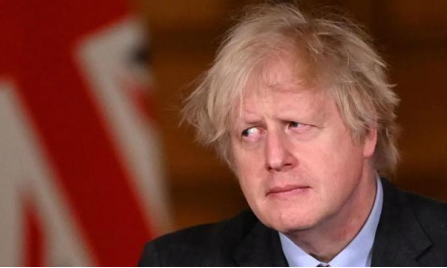Sterling was down 0.63% at $1.3026, its lowest level since March 15. Bets on a quick rate hike by the Bank of England waned to be bearish for the pound. The pound was also dragged down by the euro's weakness after Western nations said fresh sanctions on Russia were needed. While money markets still expect the Bank of England to raise rates by another 138 basis points this year, which would take the key rate above 2.0%, some analysts believe that forecasts for the pace of tightening are too aggressive.
The US Commodity Futures Trading Commission CFTC foreign exchange business position report shows: As of March 30th to April 5th, the long position of GBP/USD increased by 10,910 lots to 175,429 lots. Commodity prices rose against the backdrop of rising inflation. On the other hand, in the UK, the Bank of England has adopted a moderate rate hike rhythm under the situation that its domestic inflation has continued to rise, and the market is still in a weak position.
The latest Bank of England action heralds more pain for cash-strapped British consumers. Mortgage lenders have been raising home loan rates to reflect the rise in official rates. Interest payable on two-year fixed-rate packages, the most common product for UK borrowers, has climbed more than 55 basis points since September last year. These central bank rate hikes have done little for savers. The proportion of UK savings accounts paying more than the official interest rate has fallen to its lowest level since January 2009, according to retail finance data firm Moneyfacts Group Plc.
The European Commission said on the 8th local time that the governments of EU member states have now frozen a total of about 30 billion euros of assets related to Russian oligarchs and other sanctioned Russian personnel. The Russian Foreign Ministry announced the expulsion of two staff members of the Bulgarian embassy in Russia.
On April 8, local time, the British Foreign Office announced that the new sanctions launched by the United Kingdom on the same day were aimed at the daughter of Russian President Vladimir Putin and Russian Foreign Minister Lavrov, in order to further crack down on Russian elites and their families. The UK coordinated these sanctions with the US. Putin's two daughters, Ekaterina Tikokhonova and Maria Putina, and Lavrov's daughter will be restricted from travel and have their assets frozen. Previously, the United Kingdom imposed sanctions on Lavrov's stepdaughter on March 25.
The Central Bank of Russia announced on the 8th that it will cut the benchmark interest rate by 300 basis points, from 20% to 17%. The official website of the Central Bank of Russia issued a statement on the same day, saying that the external environment facing the Russian economy is still full of challenges, and economic activities are severely restricted; financial stability risks still exist, but after the Russian government has taken measures such as controlling capital flows, its upward trend has been curbed. The external conditions of the Russian economy are still very complex, which limits Russia's economic activities to a large extent. Risks to Russia's financial stability remain, but they are no longer rising. Russia's central bank said it may continue to cut key interest rates in the near future.
The statement said that Russia's inflation will continue to rise due to the base effect, but the latest data show that the current rate of price increases has slowed significantly due to factors such as the strengthening of the ruble exchange rate. The Central Bank of Russia will further assess internal and external risks, financial market reactions and inflation trends, and continue to make corresponding adjustments to the benchmark interest rate.
In the past month or so, the exchange rate of the ruble has experienced huge fluctuations. After the Russian side announced the launch of a special military operation on February 24, the ruble began to show signs of rapid depreciation. The exchange rate against the US dollar fell below 80 to 1 on the same day, and then fell all the way. On March 9, it once fell below 120 to 1, a record low. With the Russian side taking various measures to deal with sanctions, stabilize the financial market and boost market confidence, the ruble exchange rate has gradually recovered.
 2022-04-11
2022-04-11
 1015
1015





 简体中文
简体中文
 ภาษาไทย
ภาษาไทย
 繁體中文
繁體中文
 Indonesia
Indonesia











